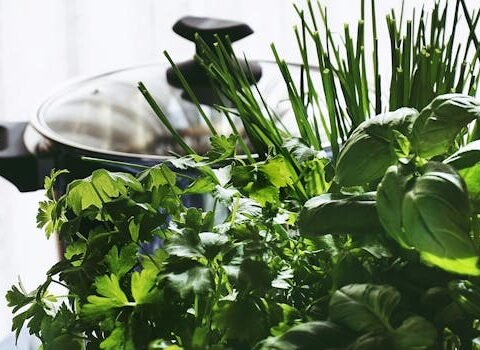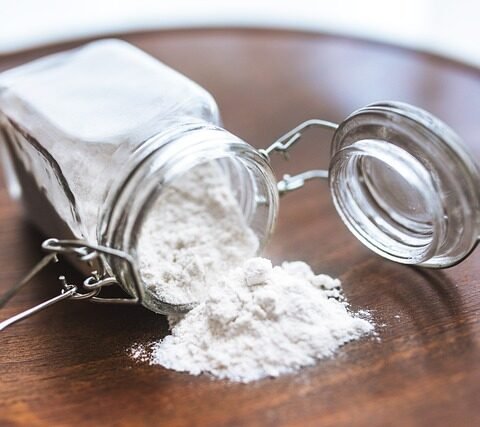Tips for replacing gluten-containing ingredients
In gluten-free cooking, it can sometimes be difficult to replace certain ingredients while maintaining the authentic flavors of dishes from around the world. Yet, with a little creativity, it is possible to substitute key ingredients without compromising recipe quality. Here are ten tips for replacing common ingredients and making your dishes a success while remaining faithful to culinary traditions.
1. Wheat flour → Rice and buckwheat flour
Wheat flour is often omnipresent in recipes around the world, but there are many gluten-free alternatives. Rice flour is a great substitute for baking recipes, sauces, and even fried dishes. It has a light texture that is particularly suitable for cakes, muffins and breads. It can be cut with buckwheat flour for a better texture.
2. Soy sauce → Tamari
Soy sauce is a staple in Asian cuisine, but it contains gluten. Tamari , a gluten-free soy sauce, is a great alternative that preserves the same depth of flavor . It can be used in marinades, sauces and stir-fries.
3. Crème fraîche → Coconut cream
In dishes requiring crème fraîche, coconut cream is a lactose- and gluten-free option. It provides a similar richness and can be used in curries, soups, and even desserts like panna cotta.
4. Couscous → Quinoa
Couscous, often used in North African dishes, contains gluten. Replace it with quinoa , a protein-rich seed that has a similar texture and absorbs flavors well. Quinoa works great in salads, tabbouleh or side dishes.5
5. Shortcrust pastry → Dough made from chickpea flour
To make gluten-free quiches or savory tarts, opt for a dough made from chickpea flour . This flour gives a crisp texture and a slightly nutty flavor, ideal for Mediterranean recipes.
6. Breadcrumbs → Ground almonds
The breadcrumbs used to bread meats or fish can easily be replaced with ground almonds or almond flour. This alternative provides a crisp texture and rich flavor that pairs well with many dishes.
7. Wheat semolina → Polenta
In some Mediterranean or Middle Eastern dishes, wheat semolina may be replaced with polenta , a gluten-free cornmeal. Polenta can be cooked and served as a side dish, or used to make polenta gnocchi.
8. Yeast → Food bicarbonate plus an acid
The yeast can be replaced with bicarbonate. But this ingredient alone is alkaline. To produce the same effect, it needs to be combined with an acid (such as lemon juice, vinegar, yogurt or cream of tartar).
For each teaspoon (5 g) of baking powder:
- Use 1/3 teaspoon of baking soda .
- Add 1/2 teaspoon of an acidic agent (like lemon juice or vinegar).
Tips for replacing unobtainable ingredients
It is sometimes frustrating to discover a recipe that uses specific ingredients that are difficult to find in France. Whether you are passionate about world cuisine or have dietary constraints, here are some ideas to effectively replace these rare ingredients while remaining faithful to the spirit of the recipe. These alternatives are easy to find in France and suitable for a gluten-free diet.
1. Cassava flour (tapioca starch) → Corn flour or cornflour
Cassava flour is common in African, South American and Asian cuisines, but difficult to find in France. A good alternative is corn flour or cornstarch , which allows you to obtain similar textures in gluten-free breads and pastries.
2. Banana leaves → Parchment paper or aluminum
Banana leaves , often used in Southeast Asian and Latin American cuisines to wrap food before cooking, are not common in France. Replace them with parchment paper or aluminum foil for a similar effect. Although you lose the design and subtle flavor of the leaf, these alternatives retain the moisture of the food.
3. Okra (okra) → Zucchini or green beans
Okra , or South American dishes, can be difficult to find. For a similar texture in stews or soups, opt for zucchini or green beans , although they won't offer exactly the same slightly slimy effect.
4. Curry leaves → Bay leaf or lemongrass
Curry leaves , bay leaves combined with lemongrass . This combination provides a lemony and slightly spicy flavor that is close to the original.
5. Galangal → Ginger and lemongrass
Galangal , often used in Thai cuisine, is a rhizome close to ginger but with a more peppery and tangy taste . You can replace it with a combination of ginger and lemongrass , which mimics its flavors well while remaining easy to find.
6. Ancho chilies (dried chili peppers) → Smoked paprika and cayenne pepper
Ancho chilies , commonly used in Mexican cuisine, are not always available in France. Replace them with smoked paprika for smoky flavor and cayenne pepper for heat. This combination works well in sauces, marinades and stews.
7. Masa harina → Fine corn flour
Masa harina is a nixtamalized corn flour used in the preparation of tortillas and tamales. If you can't find it, opt for fine corn flour (like that used for polenta) although this won't produce exactly the same texture. You can also add a little rice flour to adjust the consistency.
8. Black beans → Red beans or adzuki beans
Black beans , common in Latin American cuisine, can be replaced with red beans or adzuki beans , which are easier to find in France. They have similar textures and are suitable for dishes such as chili or stews.
9. Evaporated milk → Coconut cream or rice milk
Evaporated milk , used in some South American or Caribbean recipes, can be replaced with coconut cream or rice milk , especially in gluten-free desserts. They provide a creamy texture while being suitable for lactose-free diets.
10. Achiote (annatto seeds) → Paprika and turmeric
Achiote , or annatto seeds, give a beautiful orange-red color to Caribbean or Mexican dishes . You can replace it with a combination of paprika and turmeric to get a similar color and mild flavor.
10. Dashi (Japanese broth) → light smoked fish with some nori seaweed
Dashi is a basic broth in Japanese cuisine, usually made from dried bonito flakes (katsuobushi) and kombu seaweed. You can replace it with a light fish broth with nori seaweed, or a little miso broth with seaweed.
Conclusion
These tips for replacing ingredients containing gluten or not found in France will allow you to continue to explore the richness of gluten-free world cuisines, even with local products. By adapting your recipes creatively, you will discover that many substitutions allow you to remain faithful to the original spirit of the dish while respecting your dietary constraints.



